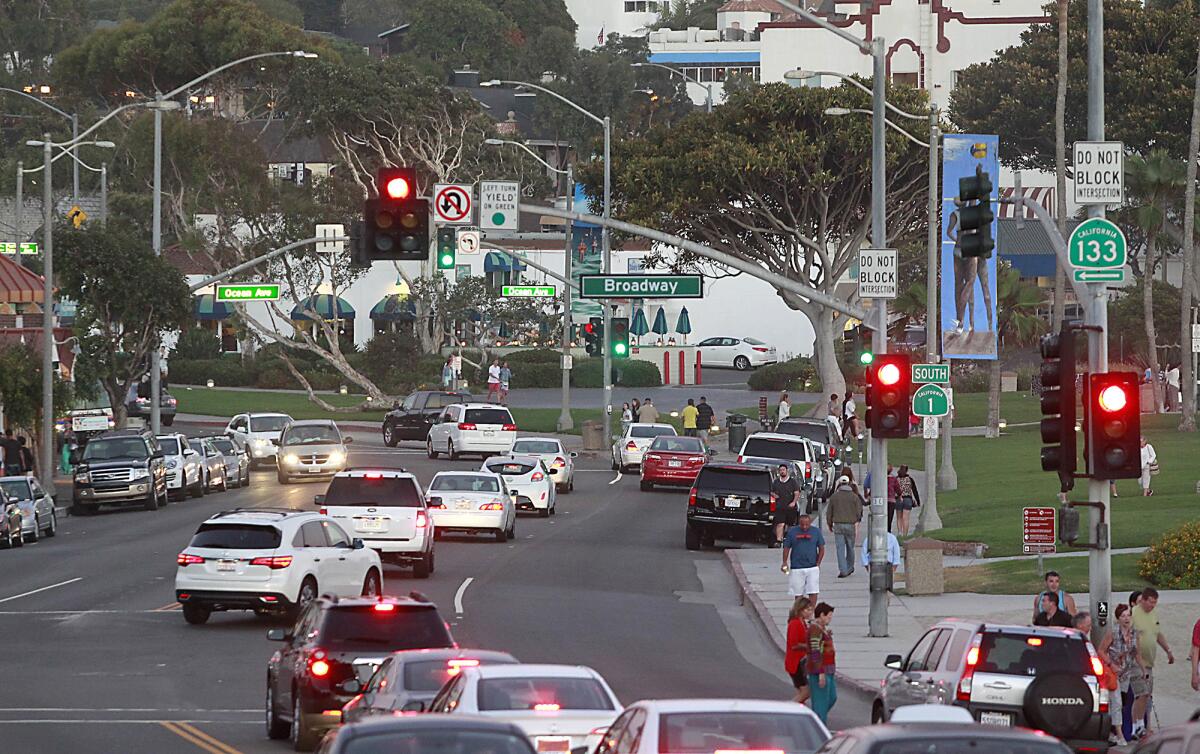Laguna Beach isn’t ready to ease parking rules

The Planning Commission wants more information before it considers easing parking restrictions in crowded Laguna Beach.
The Laguna Beach Planning Commission held off on recommending any changes to the city’s parking rules until it gets more information from staff and a consultant that gathered data on demand throughout downtown.
Commissioners on Wednesday wrestled with the idea of easing requirements on businesses after hearing a report from planning and design firm IBI Group, which studied the use of public and private parking spaces, taking into account the difference between weekday and weekend needs, during August and September.
Based on results of its study, IBI suggested that all non-residential sites, such as restaurants and retailers, provide 2.92 spaces for every 1,000 square feet or gross floor area, far fewer spaces than called for in the existing code.
IBI indicated the ratio assumes the city would have agreements with all private-lot owners to free up those spaces to the public when those businesses are not open.
But City Manager John Pietig said it’s unrealistic to think that the city could establish shared-parking agreements with all the private-lot owners.
This led commissioners to direct staff and IBI to consider whether a different ratio would be more appropriate.
Under Laguna’s current code, retailers must provide one space for every 250 square feet of floor area. For restaurants, the requirement is one space for every 100 square feet.
Supporters lauded the flexibility the proposal could give business owners.
Opponents said they feared that a blanket rate could lead to an influx of restaurants since they would particularly benefit.
Commissioners also directed staff and IBI to consider the influence of ride-service companies Uber and Lyft and the city’s unique appeal to visitors from nearby areas because of its beaches, galleries and restaurants.
“County land use is intensifying,” Commissioner Roger McErlane said. “There are a lot of high-density projects in Irvine, Costa Mesa and Mission Viejo. Eventually [these residents] are going to get to Laguna. It’s a destination. We’re dealing with outside market pressure.”
McErlane said he wants an idea of how much shared parking agreements could cost the city and the duration of such agreements, along with merchant feedback.
The city is identifying available private lots downtown and consulting with owners about the feasibility of opening up their spaces, according to a city staff report.
Analyzing parking trends is one of the city’s tasks as it revises the downtown specific plan, a planning document that outlines guidelines for development while recognizing the role of parking and transportation.
IBI monitored hourly use of 3,365 spaces — 1,691 private and 1,674 public — from 10 a.m. to 10 p.m. in a 115-acre survey area bordered by the Boys & Girls Club of Laguna Beach to the north, Cliff Drive on the west, North and South Coast Highway on the south, and Sleepy Hollow Lane/Legion Street on the east.
Overall, IBI reported higher occupancy rates for public spaces, such as those in lots and at on-street meters, rather than spaces in privately owned lots.
Private spaces are “underutilized,” IBI said in its report.
For example, on a summer weekend, occupancy rates in public spaces ranged from 62% to 97%, compared with 43% to 64% for private spaces, according to IBI’s report.
Commission Chairwoman Sue Kempf said securing permission even from some private lot owners won’t solve another traffic woe: congestion.
“Even if we utilize private lots, that does not help with the circulation problem,” Kempf said. “We will still have all these people looking for spaces. They’re in town, driving around the same streets.
“How are we going to improve our circulation problem absent having some parking structure in the canyon?”
“That is the question,” Pietig said. “It takes all the tools mentioned so far: set rates [for parking meters], public transit, peripheral lots.”
Twitter: @AldertonBryce
